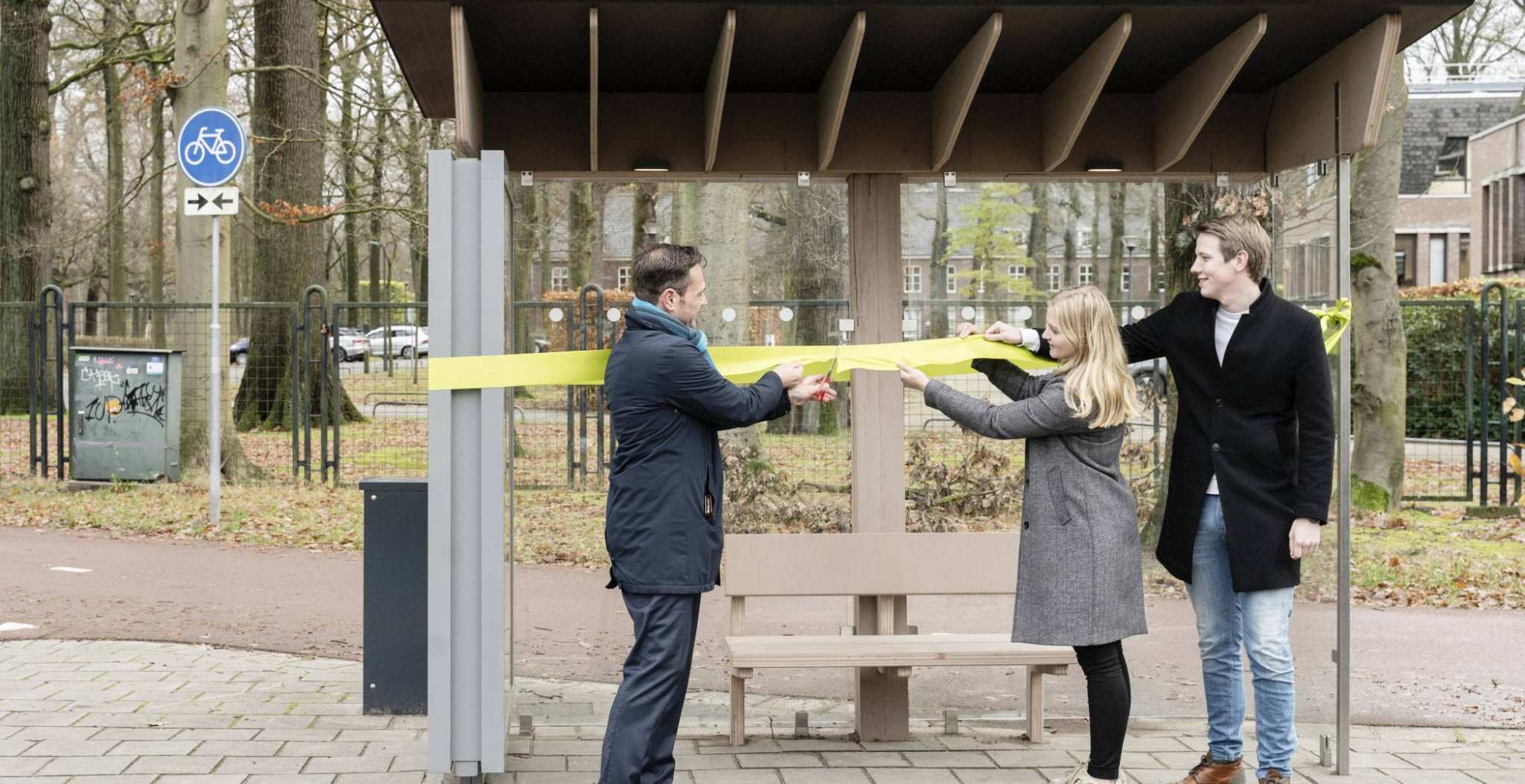Bus shelter from rice
Mayor of De Bilt, Sjoerd Potters has unveiled the first bus shelter made from rice husks in the Netherlands. The bus shelter was designed and developed by HAN students.

The students from Industrial Design Engineering and Mechanical Engineering were extremely proud of their design, which won the Cleantech Battle some time ago. Their bus shelter was the best sustainable technological development. And now it’s here. The completely circular and bio-based shelter was built together with business clients OFN and Sweco. It was unveiled by Mayor Potters.
Work cut out
The students certainly had their work cut out for them. “The assignment they got was to create a design that was circular, modular, flexible, demountable, bio-based and smart, and had a climate neutral energy supply. The CO2 footprint also needed to be reduced by at least 80% in comparison to traditionally produced shelters. Simply said, the bus shelter had to be made from recycled and sustainable materials and with a design that was simple to reproduce – in different sizes”, says Rudi van Hedel, lecturer and Sweco project manager. “A final requirement was that the bus shelter had to look appealing, ready for the streetscape of the future.
Rice husks
So, a hefty task, which the students worked on for a long time. They designed the bus shelter based on their own perspective. The idea here was how the students see the future. “At the moment bus shelters are made with mostly concrete and aluminum. We choose a material based on rice husks. The great advantage is that this material is already produced in Europe. It’s a by-product from processing rice. This means no extra agricultural land needs to be used. And so it doesn’t need to be grown instead of food. That greatly reduces CO2 emissions created when producing the material,” says Mark Hofman from OFN.

Sedum roof and solar panels
In addition to giving it a green and welcoming appearance, the bus shelter's sedum roof also absorbs CO2. It is a place where plants, insects and birds can come together, which contributes to the biodiversity. The bus shelter also has solar panels that power the lights and the equipment that monitors the traffic. The final design is fully modular, flexible and demountable. At the end of the life-cycle, it can be dismantled, reused or recycled.
Traffic report
The bus shelter is more than just a place for passengers to wait for public transport. It also measures the volume of traffic on the surrounding roads. “That’s the Soestdijkseweg. There’s a camera attached to the shelter. The passing cars, bikes and other road users are registered using smart software. “We want more insight into the road usage so we can better regulate the flow of traffic, for example by adjusting traffic lights,” explains Rudi.
The circular Netherlands
The bio-based bus shelter is a great example of how we’re working towards a circular economy. It’s a goal set by the government for 2050. An ambitious goal, but not unachievable. An economy without waste, where everything runs on recyclable raw materials. “The bus shelter is a great example of a circular design that helps to achieve this objective; we as HAN are proud of that,” says Karin van Haren of focus area Sustainable Energy and Environment of HAN.
Simply said, the bus shelter had to be made from recycled and sustainable materials and with a design that was simple to reproduce – in different sizes”
